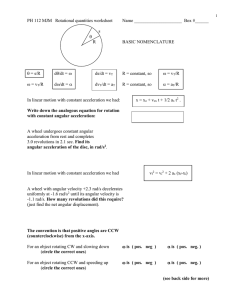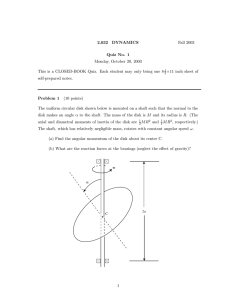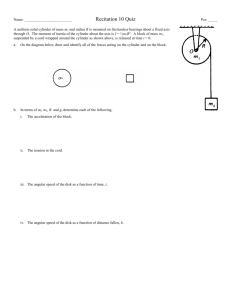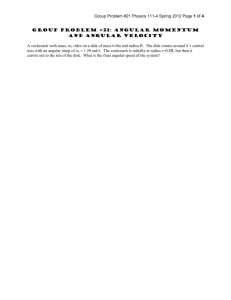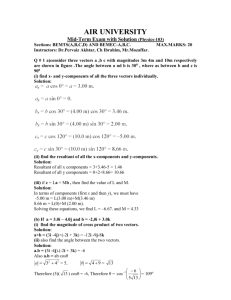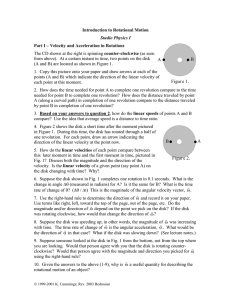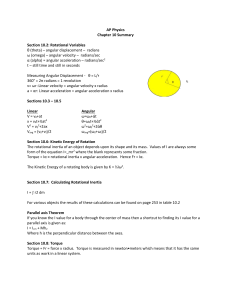Physics 24 Laboratory Report
advertisement
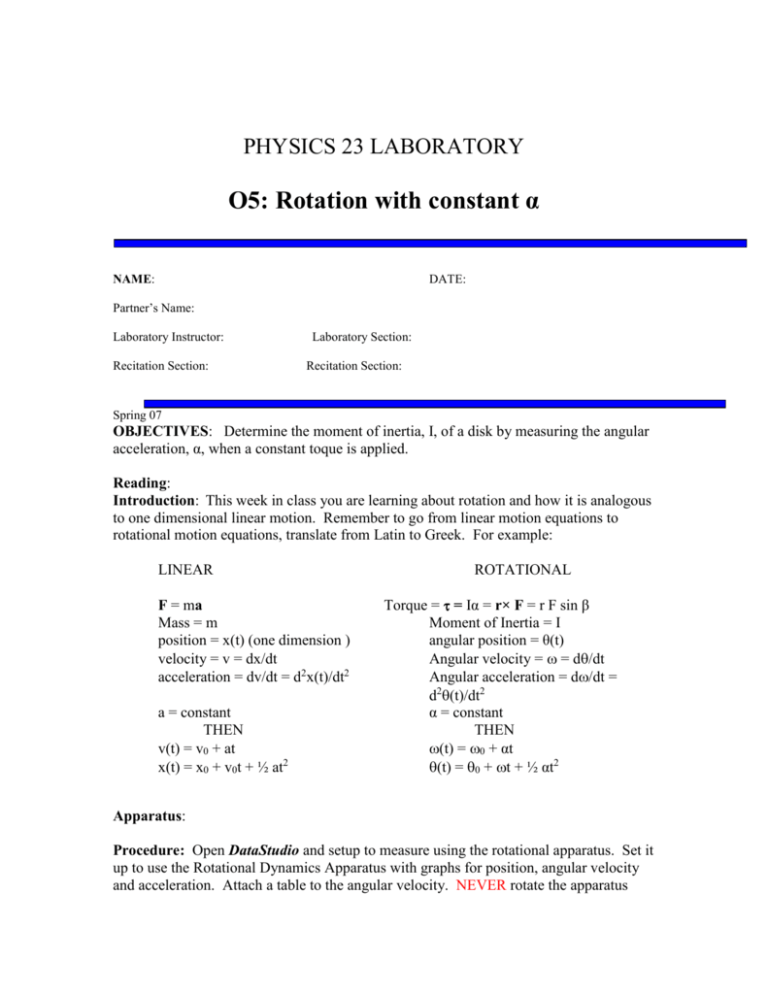
PHYSICS 23 LABORATORY O5: Rotation with constant α NAME: DATE: Partner’s Name: Laboratory Instructor: Recitation Section: Laboratory Section: Recitation Section: Spring 07 OBJECTIVES: Determine the moment of inertia, I, of a disk by measuring the angular acceleration, α, when a constant toque is applied. Reading: Introduction: This week in class you are learning about rotation and how it is analogous to one dimensional linear motion. Remember to go from linear motion equations to rotational motion equations, translate from Latin to Greek. For example: LINEAR F = ma Mass = m position = x(t) (one dimension ) velocity = v = dx/dt acceleration = dv/dt = d2x(t)/dt2 a = constant THEN v(t) = v0 + at x(t) = x0 + v0t + ½ at2 ROTATIONAL Torque = = Iα = r× F = r F sin β Moment of Inertia = I angular position = θ(t) Angular velocity = = d/dt Angular acceleration = d/dt = d2(t)/dt2 α = constant THEN (t) = 0 + αt (t) = 0 + t + ½ αt2 Apparatus: Procedure: Open DataStudio and setup to measure using the rotational apparatus. Set it up to use the Rotational Dynamics Apparatus with graphs for position, angular velocity and acceleration. Attach a table to the angular velocity. NEVER rotate the apparatus unless the air supply is on and the pressure gauge reads over 6 psi. The pinchcock at the right hand side of the apparatus should be open so the bottom disk does not rotate. Release the hanging mass and start recording. Stop before the hanging mass reaches the end of its fall and reverses. Measurements: Paste a plot of (t) vs. t and a table of (t) vs. t here Mass of Disk: Diameter of Disk: Diameter of pulley: Analysis: Determine the angular acceleration α by fitting the appropriate curve to your (t) vs. t curve. Calculate the torque assuming F = mHANGING g. If you need help measuring r, ask your lab teacher. Calculate the moment of inertia of the disk from your measurements of α. Calculate the moment of inertia of the disk from your measurements of its mass and diameter (neglecting the moment of inertia of the pulley.) How do the two results compare? Now change the size of the pulley and repeat the above. Conclusions:. 1. Do your measurements support α = constant? Explain.
